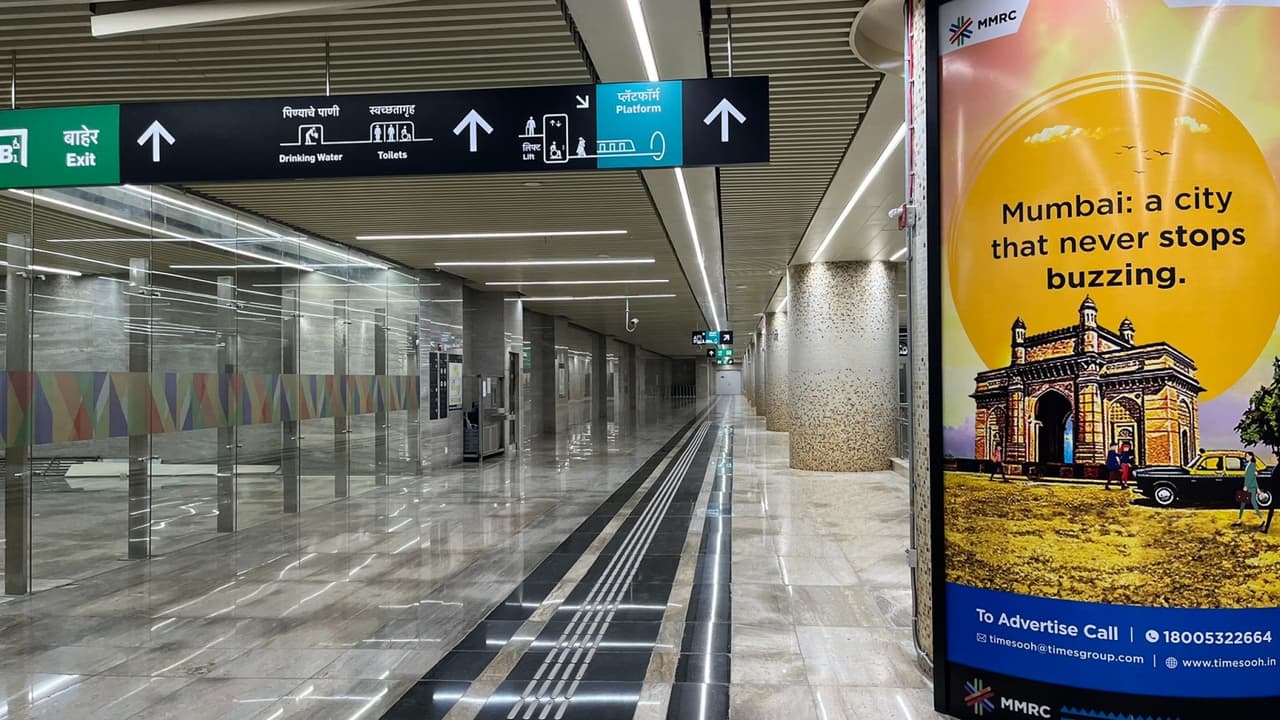Mumbai Metro 3 Alert: Will the daily journey of residents of South Mumbai, BKC and Dharavi be never the same? Know how this underground metro is going to change the city’s traffic jam, crowd and travel time!
Mumbai traffic solution: Mumbai is always known for its crowd, traffic jam and long journey. In such a situation, is there any solution that can make the city travel fast, easy and accessible? Mumbai Metro Line 3, also known as Aqua Line, has come up with this change. It is a completely underground metro corridor that extends from the cuff parade in South Mumbai to the north and is going to prove to be a big game changer for the residents of the major areas of the city.
What is Mumbai Metro Line 3 and why is it important?
The Mumbai Metro line 3 is 33.5 km long and has a network of 27 stations. Major commercial and residential areas like BKC, Worli, Churchgate, Kalbadevi are connected to it. About 17 lakh passengers are expected to get service daily from this metro line, which will reduce the pressure on the road and local trains of the city.
How soon will travel? Will the metro really save time?
The journey from Aare to Cuff Parade will now be completed in just one hour, while by road, the journey took more than two hours. This line will not only save time, but will also be accessible to the general public due to affordable tickets (₹ 10 to ₹ 70).
Which areas will be the most benefiting?
- South Mumbai (Cuff Parade, Churchgate, Kalbadevi): Traveling to North Mumbai will be easy and crowds will decrease on local roads.
- BKC and Worli: Being a commercial center, the connectivity here will improve and the professionals will be facilitated.
- Aare and sepz: Residents of residential and industrial areas will get easy access to the central regions of the city.
- Dharavi and Setaldevi: Deadly populated areas will take advantage of better public transport and will reduce dependence on congested local trains.
Is the metro also beneficial for the environment?
Yes, the number of cars on the road will save about 3.54 lakh liters of fuel daily and the city’s congestion is expected to be reduced by 35%. This will not only improve traffic but also reduce air pollution.
Whom does the metro line 3 connect with? Will it be a part of the entire network?
This line is fully connected to other metro and railway networks:
- Marrol Naka: Line 1 (blue line)
- Aare JVLR: Line 6 (Pink Line)
- CSMT: Line 7A (Red) and Line 8 (Golden)
- BKC: Line 2B (Yellow)
- Western Line: Dadar, Mahalakshmi, Mumbai Central, Grant Road, Churchgate
This integration ensures uninterrupted connectivity in the entire city.
Will the metro reduce traffic jams?
Yes, it will help reduce the number of vehicles on the road and reduce congestion.
Is the metro accessible to all?
The stations are made accessible in most areas, but immediate profit in some places may be limited.
Will it help keep the environment clean?
Yes, it is a permanent and clean solution by reducing fuel consumption and reducing air pollution.
Why is a revolutionary initiative considered to be Mumbai Metro Line 3?
Mumbai Metro Line 3 is not just a metro project, but it is a revolutionary initiative to change the transport, lifestyle and environment of the city. It is going to prove to be a game changer for the residents of BKC, Worli, Dharavi and South Mumbai.
